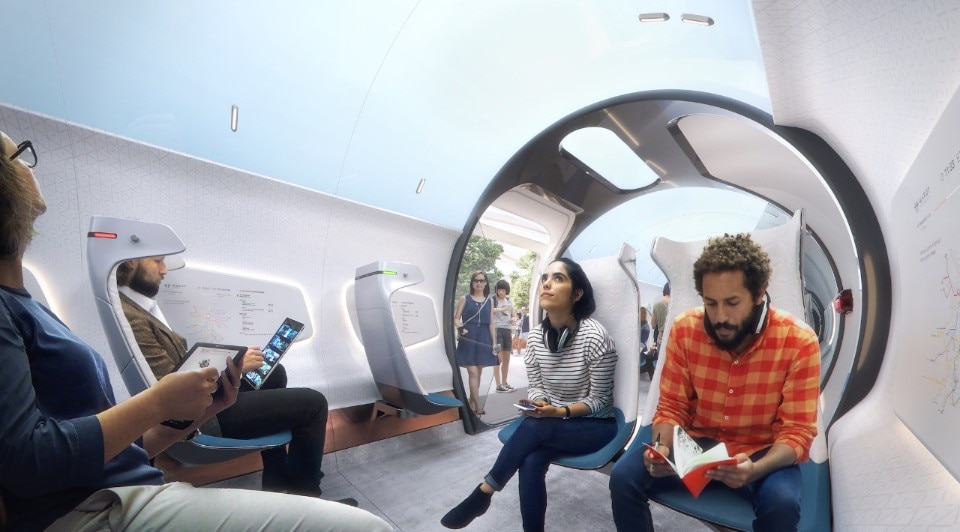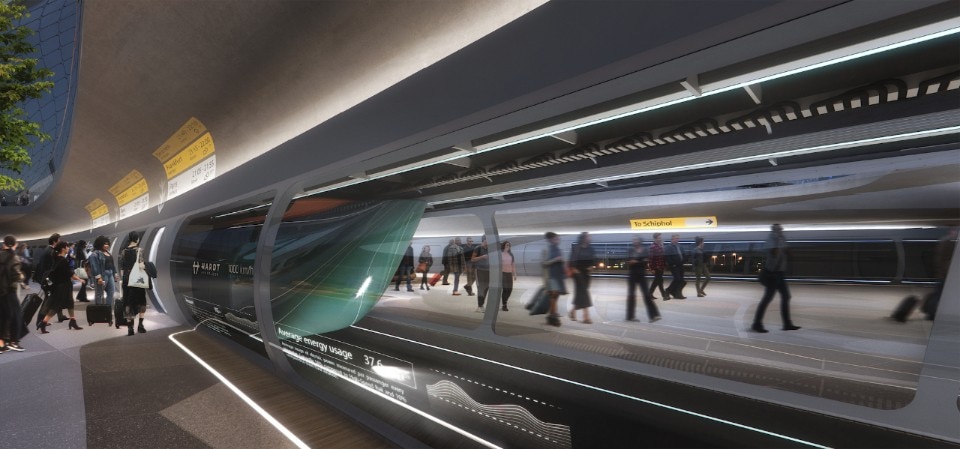Increasing environmental concerns and population growth make it increasingly necessary to create a sustainable alternative to air transport. With an expected urban population growth of 40% over the next 50 years, the role of technologies, as well as architects and urban planners, is crucial.
Hyperloop is the project of a new technology, fast and sustainable, based on the transport of goods and passengers inside low pressure pipes. The proposal, originally born in the United States thanks to research carried out by the South African entrepreneur Elon Musk, now arrives in Europe with the Dutch company Hardt Hyperloop.
The latter this week organized the first edition of HyperSummit, a meeting held in Utrecht during which UNStudio Futures Team presented its vision of a station of the future, with the project for the Schiphol Airport expansion. Particular attention was paid to the start-up study of the Hyperloop implementation programme (HIP), a study examining implementation issues related to the Amsterdam-Frankfurt project, a journey that, thanks to this new type of infrastructure, should last only 53 minutes.

“The hyperloop is not only a realistic and viable alternative to flying, it is going to revolutionise travel” says Ben van Berkel, founder and architect of UNStudio. “It will provide extremely fast travel times with direct connections between cities, enabling completely new ways of working and spending our leisure time, which in turn will lead to a multitude of economic, environmental and knowledge exchange benefits.”.
The partners have published a joint study showing how hyperloop can emerge as a new sustainable mode of high-speed travel and replace some of Airport Schiphol’s local flights by 2050. The study proposes a first network connecting Schiphol with the main neighbouring airports in Germany, Belgium, France and the UK which currently have direct air links. Hardt also predicts that by 2050, up to 73 million people will be flying between the main cities in this network.

“In the transition to a carbon neutral society it is crucial to not only improve existing modalities, but also to explore alternative, innovative mobility solutions” concludes Stefan Marges, head of the Hardt Hyperloop firm. “This study shows that hyperloop is a valuable addition to the future transportation landscape. In particular it lays the foundation for hyperloop to become a successful mode of sustainable transport in the years ahead”.

















